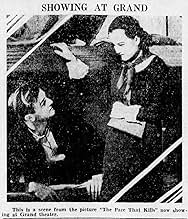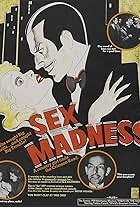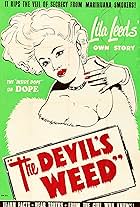A drug dealer on the run from the law meets an innocent young girl and her brother and turns them into "cocaine fiends."A drug dealer on the run from the law meets an innocent young girl and her brother and turns them into "cocaine fiends."A drug dealer on the run from the law meets an innocent young girl and her brother and turns them into "cocaine fiends."
Sheila Bromley
- Fanny
- (as Sheila Manners)
Charles Delaney
- Dan - the Detective - Dorothy's Boyfriend
- (as Chas. Delaney)
Fay Holden
- Madame - Henchwoman
- (as Gaby Fay)
Dick Botiller
- Gangster
- (uncredited)
Donald Kerr
- Drunk in Nightclub
- (uncredited)
Eva McKenzie
- Mrs. Perkins
- (uncredited)
Rose Plumer
- Mrs. Grady - Landlady
- (uncredited)
Hal Price
- Bing - the Detective
- (uncredited)
Storyline
Did you know
- TriviaWhen Fanny and Eddie go to the club, Fanny points out "Shirley Claire, the famous actress" and the shot is followed by two stock footage inserts from another film, showing a young man talking to a pretty young woman while seated at a table. This footage is actually from the original The Pace That Kills (1928), and the actress shown was the one who played the original Fanny. So essentially, in this scene, Fanny points to herself.
- GoofsLate in the movie, the cocaine addicted brother gets the money to get his cocaine 'fix', and is next seen in a Chinese opium den having an opium pipe prepared for him. Cocaine and opium are unrelated drugs, and one will not satisfy an addiction to the other.
- Crazy creditsOpening statement: Among the many evils against which society struggles, one of the most vicious is the traffic in dope . . in every community where the menace developes all the forces which society can mobilize, including social agencies, doctors, law enforcement officials and government band together to stamp it out . . . . . . Without such activity the dope evil would run rampant. Yet it has long been recognized that one other powerful force is necessary before the struggle can be completely successful. That force is an aroused and educated public awareness. It is in the hope of aiding in developing such awareness that this picture has been produced. What happens to Jane Bradford may happen to anyone. There will always be "Jane Bradfords" until you, Mr. Citizen, co-operate with the forces now fighting the dope evil to forever stamp it out in our land. --The Management.
- ConnectionsEdited into Confessions of a Vice Baron (1943)
Featured review
I wish this movie rose to the level of entertaining camp. But it doesn't. Instead, it's simply a bad low-budget film with few redeeming qualities. I take "camp" to mean that a scene(s) is laughably overdone because of either acting, scripting, or staging. Here the narcotic scenes are not ludicrously overdone like those in the notorious Reefer Madness. Rather, the dope (cocaine, and apparently opium) either puts a smile on the user's face or puts him into a dreamy haze-- not exactly the burlesque of that 1936 classic.
To me, the only scenes that approach camp are the two ridiculous singing acts, especially the singing waiter whose weird eye-rolling is priceless. Also, there's little titillation of the sort that characterizes most 30's exploitation films-- no nude, semi-nude or even seduction scenes. As usual for these films, the city is presented as a corruptive influence on small town innocents who are preyed upon by ruthless city-slickers. Then too, there's the notorious double standard in play. Note how the girls "can't go home again" after being corrupted, but Eddie can go once he kicks the habit. There are aspects of the typical exploitation flick, but the result looks more like an artless attempt to warn youth away from drugs of any sort. The trouble is that both the story- line and the cost-cutting are much too obvious.
To me, the only scenes that approach camp are the two ridiculous singing acts, especially the singing waiter whose weird eye-rolling is priceless. Also, there's little titillation of the sort that characterizes most 30's exploitation films-- no nude, semi-nude or even seduction scenes. As usual for these films, the city is presented as a corruptive influence on small town innocents who are preyed upon by ruthless city-slickers. Then too, there's the notorious double standard in play. Note how the girls "can't go home again" after being corrupted, but Eddie can go once he kicks the habit. There are aspects of the typical exploitation flick, but the result looks more like an artless attempt to warn youth away from drugs of any sort. The trouble is that both the story- line and the cost-cutting are much too obvious.
- dougdoepke
- Oct 19, 2008
- Permalink
Details
- Release date
- Country of origin
- Language
- Also known as
- The Cocaine Fiends
- Filming locations
- Twin Barrels Drive-In Restaurant - 7228 Beverly Boulevard, Los Angeles, California, USA(drive-in restaurant - no longer extant)
- Production company
- See more company credits at IMDbPro
- Runtime1 hour 8 minutes
- Color
- Sound mix
- Aspect ratio
- 1.37 : 1
Contribute to this page
Suggest an edit or add missing content































